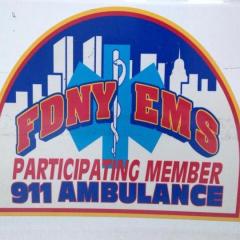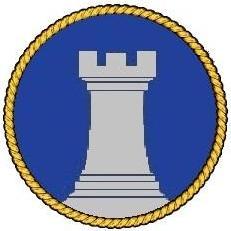-
Content count
63 -
Joined
-
Last visited
About babhits16
- Birthday April 23
Profile Information
- Location New York City
Recent Profile Visitors
4,023 profile views
-
LayTheLine liked a post in a topic: New Jersey Mobile Health Cate EMS unit
-
babhits16 started following New Jersey Mobile Health Cate EMS unit
-
They do mutual aid/ 2nd due response in Mahwah.
-
babhits16 started following New Fort Lee NJ Rescue 2 Delivered
-
Terrible idea. Even with reflective tape will be difficult to see at night.
-
babhits16 liked a post in a topic: Volunteer fire dept staffing
-
babhits16 liked a post in a topic: AMR Now Operating in Westchester From New Rochelle Base
-
babhits16 liked a post in a topic: Sneak Preview: Greenville FD's New Ladder 4
-
babhits16 liked a post in a topic: Sneak Preview: Greenville FD's New Ladder 4
-
babhits16 liked a post in a topic: Hartsdale Mutual Aid To Yorktown?
-
babhits16 liked a post in a topic: Hartsdale Mutual Aid To Yorktown?
-
babhits16 liked a post in a topic: Hartsdale Mutual Aid To Yorktown?
-
babhits16 liked a post in a topic: Hartsdale Mutual Aid To Yorktown?
-
x635 liked a post in a topic: Lawrence Cedarhurst FD to hire career staff.
-
LCFD has a decent budget from my understanding. Very 'upper middle class' area, with certain neighborhoods bordering on wealthy. They current have paid EMS staff, including paid ALS- but I don't know any specifics. The bottom line is they should have the money to sustain this in the future. I'd highly doubt they'd try to get this grant if they knew it couldn't be sustained long term. Nassau County Civil Service has a firefighter exam, but it is specified for Garden City (as far as I know)- Garden City is the only other paid FD that uses Nassau County Civil Service (Long Beach uses the cities civil service). Not sure whether they would be able to use that list or have to create a new one. IMO, I think this is really intended to fund paid EMS services. They have a very active FD with no issues getting out. I'm going to guess they'll be hiring FF/ EMT's or FF/ Paramedics. This will be interesting to follow- hopefully more places will follow suit.
-
Lawrence Cedarhurst is its own Fire District, which includes a small amount of unincorporated/ town controlled area. In addition, they contract with the Village's of Lawrence and Cedarhurst, and the other two mentioned Fire Districts.
-
FDNY 10-75 liked a post in a topic: Lawrence Cedarhurst FD to hire career staff.
-
Westfield12 liked a post in a topic: Lawrence Cedarhurst FD to hire career staff.
-
Lawrence Cedarhurst FD in Nassau County, LI is now only the third municipal FD on LI to hire career firefighters (officially that is). http://liherald.com/fivetowns/stories/Supplementing-the-firefighting-manpower,83896
-
babhits16 started following Lawrence Cedarhurst FD to hire career staff.
-
dwcfireman liked a post in a topic: One town, 35 chiefs
-
Bnechis liked a post in a topic: One town, 35 chiefs
-
vodoly liked a post in a topic: One town, 35 chiefs
-
One thing that must be considered about these 'heavy rescues' is that they are often nothing more than scene support + basic extrication, and are not considered a special unit. The hurst tool makes them 'heavy'. Beyond hydraulic tools, airbags and cribbing there is nothing that makes them 'heavy'- the rest of the truck is filled with scene support gear such as spare SCBA's, generators, extra handtools, speedy dry etc. There is no special training, just pass FF1 like anyone else. In my opinion a true heavy rescue is a special unit, comprised of experienced FF's that are TRAINED and EQUIPPED for vehicle extrication, technical rescue, SCUBA (if applicable), minor hazmat, and most importantly FAST/ RIT. Not scene support. Remember first rescue company in the nation (FDNY Rescue 1) was created for the sole purpose of firefighter rescue. Another good point was made- most heavy rescue are apart of their own companies. As unnecessary as they are they will never go away, remember a fire company in NYS can technically be considered a legal form of government. There are a few departments in Nassau County that operate 'heavy rescues' in the traditional sense. They are well trained and can be used as a regional asset and their record of providing mutual aide to other agencies for special situations proves it (Bethpage, North Bellmore).
-
babhits16 started following One town, 35 chiefs
-
But then not everyone would get a take home car and be able to maintain their silos of excellence!
-
fdalumnus liked a post in a topic: Village Of Port Chester Disbands Career FD
-
EmsFirePolice liked a post in a topic: Village Of Port Chester Disbands Career FD
-
Bnechis liked a post in a topic: Village Of Port Chester Disbands Career FD
-
babhits16 liked a post in a topic: Greenville,NY Fire Department (Orange) DISBANDED
-
babhits16 liked a post in a topic: Greenville,NY Fire Department (Orange) DISBANDED
-
This has been an interesting situation to me. I have heard great things about Rye Brook FD. When they started their own service I'm glad they recognized the value in a career department. There is nothing wrong with a department being volunteer, many do a great job. However, my personal experience in the tri state reigon has really left a poor taste in my mouth and I assume Rye Brook recognized the boys club/ political climate and wanted to put guaranteed protection and citizen safety first. I wonder/ hope that when the lawsuit settles Rye Brook settles the suit they hire the rest of the PCFD8 and become a fully staffed 24/7 agency and take the opportunity to become a premier FD in the region. Question- does anybody know their annual call volume and what their normal staffing during daytime hours is?
-
The summit will answer a lot of your questions and provide real examples but in the event you can't make it I'll explain a little here. First off, in NYS (and I suspect this is applicable to other areas as well) there is nothing that cannot be done via on line medical control orders. What the OLMC physician says goes. He can make discretionary orders outside of protocol treatments as he pleases. After a treatment has been given and feels comfortable with the patients condition he can accept a transport refusal (not a treatment, just a transport). This process is getting even better with the introduction of telemedicine. Going out of order to the funding issue- at this point in time community paramedic programs are not very generalized to 911. They are more for handling specific diseases or patient populations. A program is of little benefit if it is not linked to a healthcare system or other sort of healthcare provider. The most common programs revolve around the 30 day readmission policy. Under the Affordable Care Act, hospitals are not compensated for care of a patient if that patient is readmitted within 30 days of the original admission. Therefore, there is a strong incentive to invest a little bit of money to keep those patients home, out of the hospital. What is happening is that hospitals are identifying 'flequent flyers' or diseases that cause the most admissions and assigning community paramedics to help follow them and treat at home if possible. The money spent on CP services is miniscule compared to the savings it creates. So to answer your question, yes- hospitals want to keep patients home. The problem with EMS, particularly in NY, is that treatment and transport are linked together in terms of reimbursement. We need to advocate for the disalignment of treatment and transport so that they are two separate things. If that were to happen EMS could begin to bill for the treatment alone, providing a revenue source for CP visits. Some states such as Minnesota, Califnornia and Pennsylvania are beginning to do this. Once this occurs I can absolutely see omega and certain alpha level calls being treated at the CP level (aka treat, coordinate care and release). But until that revenue model is there, CP will not regularly be a part of 911. However, tax based municipal agencies that cannot bill are beginning to see the benefit of this to prevent frequent flyer usage of emergency ambulances. Hospital/ healthcare and municipal/ FD based are two totally separate animals.
-
babhits16 started following Community EMS Summit
-
Bellerose Rescue, a volunteer ambulance agency located in Queens,is hosting a Community EMS Summit. The goal of the event is to expose small agencies and EMS providers to the future of EMS in regards to community paramedicine and mobile integrated healthcare. I think this would be a great opportunity for some Westchester agencies to look at how they can provide better service to their patients, without having to transport every patient to the ER (aka treat and release). Funding of such programs will be discussed. If anybody has any questions they should email Dan at Dan@NYCommunityParamedicine.org . I really think this would be a great opportunity for Westchester EMS agencies to expose themselves to some new viewpoints on how they can better serve their residents and increase EMS value.
-
Medicare/ Medicaid reimbursement of these calls typically comes out to about $150 per BLS call (ALS even if no interventerventions are provided), regardless of what the bill actually is for. EMS agencies drastically inflate their insurance bills in order to get more from the private insurance companies who will often pay the full bill in order to offset the low reimbursement rate from Medicare/ Medicaid. Most of the time if the bill ends up directly to the patient it is written off, but depends on the agency and how aggressive they are.
-
While we're on the topic- How does Rye Brook FD operated? I understand they are a 7 to 7 operation. How many FF's are on the dept? How many are on at a time? How many runs per year? Why don't they operate 24/7?
-
babhits16 started following Village Of Port Chester Disbands Career FD
-
 babhits16 changed their profile photo
babhits16 changed their profile photo
-
babhits16 started following Englewood Hospital ALS 211
-
I think this needs to be stated- In NJ only hospitals are allowed to provide ALS service. Local agencies cannot provide ALS, therefore hospital EMS is a must have for Jersey.
-
Squad second pieces have International cabs. HMTU Engines have Ferraras cabs.
-
This is much more than open competitive bidding. TranCare is a sinking ship. Good move for NR. Over the past year they have lost multiple major NYC contracts, had to skip payday several times and even sold their assets down in Maryland/ Delaware. While EMS being the red headed step child does cause issues like this, I do not believe this is one of those circumstances. NR is lucky to have Empress. They are an outstanding company, especially when compared to others out there. TransCare hires anybody with a pulse, while you actually have to be selected by Empress. They have higher training standards, better equipement and run a true 'high performance' system.


